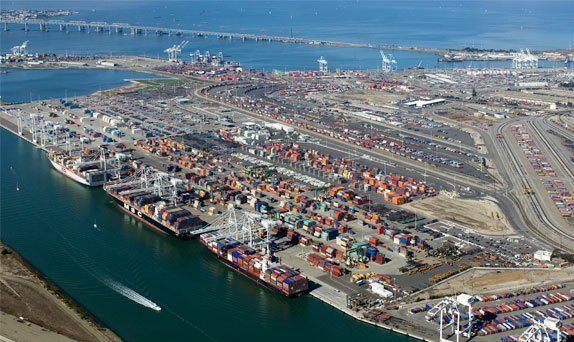Why this year’s transpacific peak season will be tricky

Klaus Lysdal from iContainers gives readers some tips on how to survive this year’s peak season on the transpacific.
The shipping peak season is once again upon us. Every year from August to October, shippers face fights for capacity amid high demand and peak shipping surcharges. This season, however, will likely be worse for transpacific shippers.
In spite of the retaliatory tariffs between the US and China, the forecasts so far seem to be a stronger performing peak season that’ll surpass that of last year. With carriers pulling some of their services on the transpacific lanes, this will likely push up rates and we’ll see a strong import season with healthy market levels for the carriers and vessels utilised to capacity. If we manage to hit record levels, we may even see extra vessels thrown into the rotation.
Amid the reduced capacity and expected record volumes, shippers’ should expect a worse space shortage situation and higher costs. Even shippers who have annual contracts may find themselves short as there’s no guarantee when capacity is scarce. Some may get caught by surprise and not be able to ship 100 % according to their desired schedule. If that happens, prices will also increase, so importers in particular should expect shipping costs to be higher than what they have been seeing so far this year.
Expect extra extra charges
Also expect surcharges to come through quick and fast and stick throughout the season. But whether these increases are labelled as GRI or peak season surcharges will depend on the carriers’ faith in how long this high volumes will last. Some may decide that a peak season surcharge is easy to justify and set the deadline for so the increase is only for a limited period of time. Whereas with a GRI, the increase is supposed to continue, which is ideal for the carriers. But some may fear having to reduce rates again once the peak season comes to an end.
US trucking shortage problem persists
The trucking shortage situation in the US will prove to be more challenging than before. Even though the trucking shortage has eased in some areas, it is still pretty severe, and the peak season threatens to really escalate the problem. While truckers have gotten used to the rules and are obviously getting better and better and working within the new regulations in their planning. There are still just so many variables that can throw a wrench in the system.
Overcoming this will be a major challenge this year for importers. There will be many US-inbound loads going into demurrage as it will simply impossible to secure the trucking needed quickly enough after clearance. If this starts to happen on a major scale in any port, we should expect growing congestion.
Less clout for one-time shippers
Shippers with less-frequent loads will find it more difficult than ever to secure space. And their options will be limited. Going to the carriers directly themselves will be close to a lost cause and prices will be well above the going rate. Plus when carriers are busy, they have little to no interest in new clients. Nor will they want to work with someone based on potential. They are looking for instant gratification and this means either a large volume commitment or higher rates.
As a regular client in a given a trade, some forwarders or BCOs may have a given space allocation which gives them advantages over the ‘one here one there’ shipper, who only occasionally needs space.
But there’s so much clout a freight forwarder can have as it’s ultimately up to the carriers’ nod. All forwarders can do is to try and guide their clients and schedule things in advance for their regulars. But even this is really only possible and worthwhile for shippers on a pretty straightforward schedule as forwarders can only allot so much of their capacity to pre-scheduling.
Surviving the 2018 peak shipping season
In lieu of this, it’s now more important than ever for shippers to get things right to avoid disruptions to their supply chains. The shipping mantra of how to avoid problems must be chanted with more vigour. Here’s a reiteration:
1. Plan ahead
Try to avoid anything running last minute as there are always risks of delays that are beyond anyone’s control. Space and capacity with the carriers can be an issue. So if you are booking your shipment late or if the production schedule at the supplier’s end is falling behind, you may face delays for when you can actually get space for a sailing.
2. Have clear agreements with suppliers
This way, things are not held up due to disagreements over payment, responsibilities, or confusion over documents or terms.
3. Have things lined up and ready for customs clearance
Trucking capacity is limited in several ports, so you cannot afford to lose availability due to unnecessary and avoidable delays in customs clearance. For some importers, it may make sense to use an alternative port for imports and maybe pay a little more for ocean freight or trucking just to use a port where there is more trucking capacity available to move their cargo for them.
